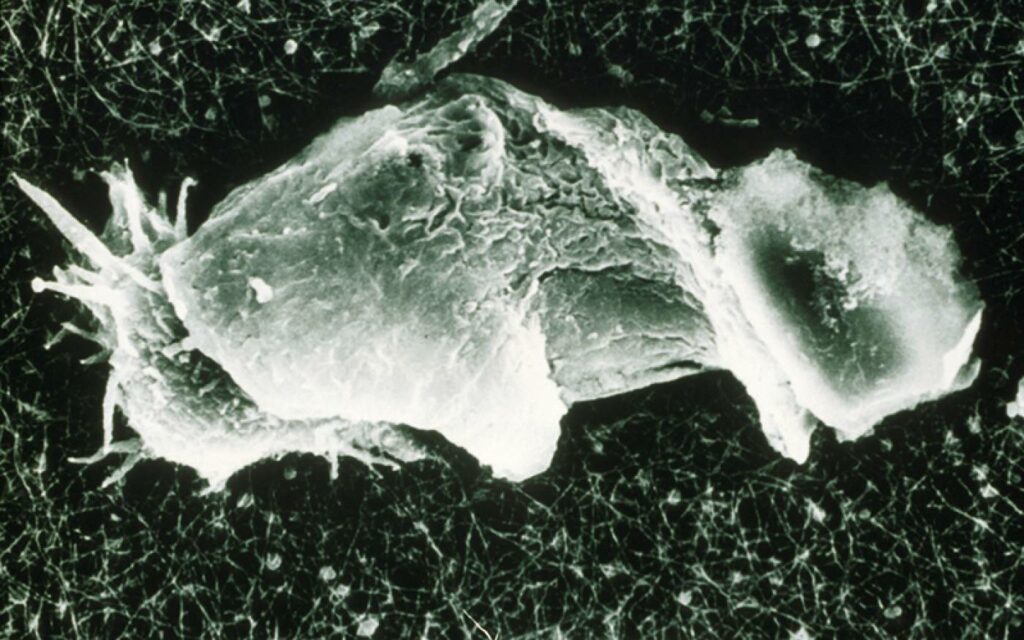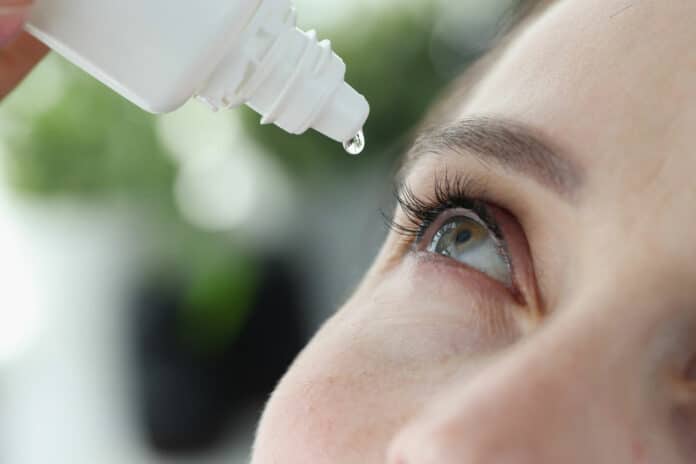In a study published in Ophthalmology, researchers found a new drug to treat a painful eye infection called Acanthamoeba keratitis (AK). This treatment is based on solid evidence and is safe. AK is a type of eye infection that causes severe pain and sensitivity to light.
Acanthamoeba keratitis (AK) is a rare eye infection in the UK, affecting about 1 in 37,000 contact lens wearers annually. However, it’s responsible for almost half of all cases of vision loss in this group. People who wear reusable contact lenses are at a much higher risk, nearly four times higher than those who wear daily disposables. Showering with lenses and wearing them overnight increases the risk more than threefold.
The treatment being studied is a low-concentration polihexanide (PHMB 0.02%), first used in the 1990s to treat AK. Professor John Dart, the lead author of this study, introduced it. While it’s widely recommended for AK treatment, it’s not an officially licensed drug, and its effectiveness has varied.
Professor John Dart (UCL Institute of Ophthalmology and Moorfields Eye Hospital NHS Foundation Trust) said: “Acanthamoeba keratitis in contact lens users can be prevented by following safe use advice: do use daily disposables if possible, wash and dry hands before handling lenses, maintain good lens and lens case hygiene, and don’t use them when bathing swimming or showering, or use goggles and renew the lens after use, don’t wear them overnight, and don’t use them every day.”
“Unfortunately, when the disease does develop, the course is prolonged and, in the recent past, one-third of patients have had poor visual outcomes with one quarter requiring surgery at some stage, ” he added.
Researchers found that polihexanide 0.02% is effective and recommended for a rare eye infection. However, it can be challenging for doctors to get, and sometimes, it needs to be used correctly, leading to varying results. Their new study, using a stronger polihexanide of 0.08%, could change the game for treating this infection. It may make the treatment more accessible, consistent, and better for patients.
Researchers did a Phase 3 clinical trial after a Phase 1 trial in healthy volunteers, which showed that the higher concentration (0.08%) of polihexanide is safe to use. In the Phase 3 trial, we compared the effectiveness and safety of the higher concentration of polihexanide (0.08%) to a standard treatment that combines a lower dose of polihexanide (0.02%) with propamidine. The trials were sponsored and funded by the Italian pharmaceutical company SIFI, with some support from the European Commission.
The study examined 127 people with Acanthamoeba keratitis (AK) from six European hospitals (in England, Italy, and Poland).
Both treatments were highly effective when used with a specific drug delivery plan. About 87% of people were cured of AK without needing surgery, one of the highest success rates ever reported. About 13.4% of people didn’t respond well to treatment, and nearly half of them required corneal transplant surgery. The overall transplant rate of 6.3% is meager for AK cases.
The researchers found that following a strict treatment protocol made the commonly recommended dual therapy work better in this study. The new single treatment is also better because it’s simpler and reduces the risk of mistakes during treatment.
Dr. Vincenzo Papa, Head of Scientific Affairs at SIFI and co-author of the study said, “We are working to make polihexanide 0.08% (Akantior®) available to AK patients as the first approved treatment. The trial showed very high effectiveness compared to the current best treatment, with a success rate of 87%.
SIFI, with over 15 years of research, is now seeking approval for polihexanide 0.08% in Europe, the UK, and the US.
Juliette Vila Sinclair Spence, Rare Disease Patient Advocate and chairwoman of the Acanthamoeba Keratitis Eye Foundation added, “This is exciting news! Patients with AK are now one step closer to having a standardized treatment, bringing hope to those with this condition.”
Acanthamoeba keratitis (AK) is an infection that causes severe pain and inflammation in the front part of the eye, called the cornea. It’s caused by a microorganism called Acanthamoeba. About a quarter of the most severely affected patients lose most of their vision or go blind, and they need long-term treatment. Overall, 25% of those with AK need corneal transplants to restore their sight.
In many developed countries, especially those in the northern part of the world, using contact lenses is now the main reason for a type of eye infection called microbial keratitis. While vision loss from this kind of infection is rare, Acanthamoeba is one of the most severe causes. It is responsible for about half of all contact lens users who lose sight due to keratitis. Surprisingly, 90% of AK cases happen because of avoidable mistakes. In recent years, there has been an increase in AK cases in South-East England.

AK is also becoming more common in some parts of the world, like certain areas in India, where eye injuries related to agriculture are a significant risk factor. The findings from this study are essential for these populations as well.
The study’s findings suggest that the new treatment protocol using a higher concentration of PHMB (0.08%) is a promising development in managing Acanthamoeba keratitis. By providing high efficacy and reducing the need for surgery, it offers a potential game-changing approach to treating this rare but sight-threatening infection.
Journal reference:
- John K.G. Dart, Vincenzo Papa, et al., TEMPORARY REMOVAL: <The Orphan Drug for Acanthamoeba Keratitis (ODAK) trial: PHMB (polihexanide) 0.08% and placebo versus PHMB 0.02% and propamidine 0.1% >. Ophthalmology. DOI: 10.1016/j.ophtha.2023.09.031.
